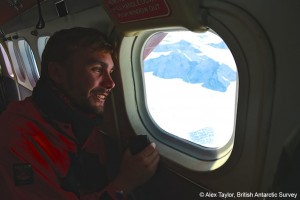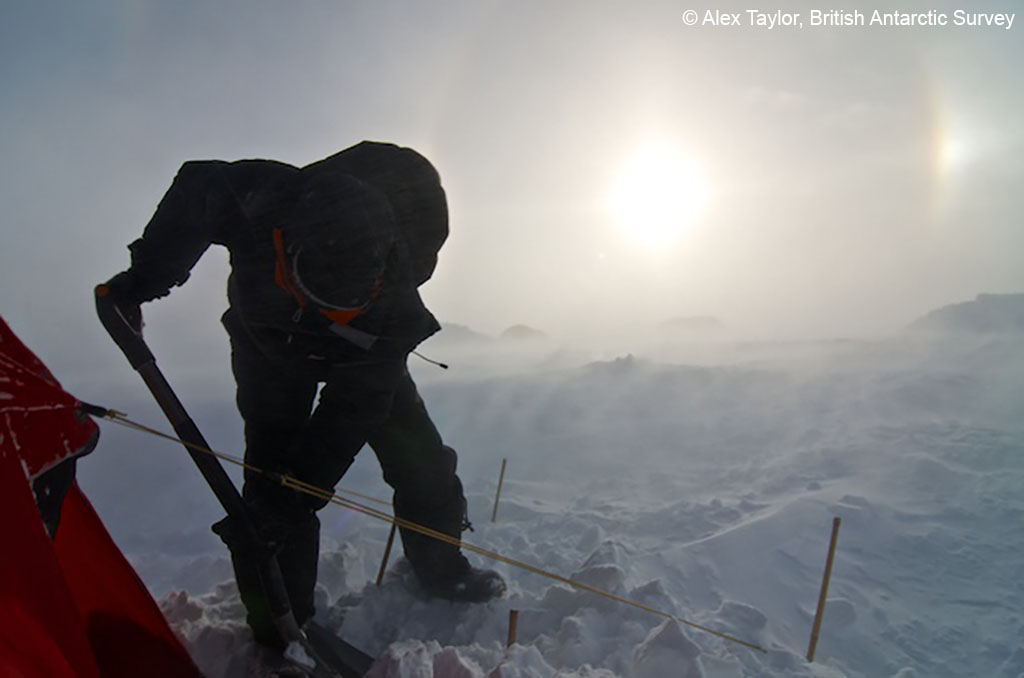Sebastian Rosier, a glaciologist on the iSTAR team, describes his first few days on Pine Island Glacier:
“It seems like no time at all since I was sitting nervously in my supervisor’s office, wondering what I’d done that was so terrible that he’d asked me to close the door behind me, only for him to offer me the chance to go on my first field trip to Antarctica. Since then it has been a blur of nervous anticipation, frantically trying to wrap up my PhD work whilst preparing for my responsibilities on the iSTAR traverse. The excitement built steadily, from my arrival in Chile to boarding the BAS flight into Rothera base and seeing my first sea ice, before finally arriving over Antarctica. After an amazing week at Rothera base, taking the field training course, learning to drive skidoos and exploring a local crevasse, we finally got the weather window we needed to fly down to Pine Island Glacier.
There would be two pilots flying us down in three stops but with such good flying conditions myself and another first timer were allowed to co-pilot the plane for the first two legs. If being involved in the iSTAR project wasn’t glamorous enough, getting to fly the small twin otters that BAS operates over the stunning Antarctic continent was an experience I will remember for a very long time. Needless to say the landing was entirely in the hands of our experienced pilots and, after the excitement of our slightly disconcerting aborted landing at Rothera due to sudden gusting side winds, I wasn’t too disappointed not to bear that responsibility.
We landed at Pine Island to be greeted by four very weathered looking members of the team who had heroically arrived a week earlier to dig out the equipment buried in a year of snowfall. After a relatively calm first night, settling into our tents and eating a hearty meal, the reality of working so far south hit mid way through the second day. While testing some equipment barely 50 metres from the camp the wind picked up suddenly, making even the simplest tasks almost impossible. We quickly staked down the equipment but had to abandon our work soon afterwards and retreat back to our lifeline, the fabled iSTAR caboose. This state of the art caravan comes fully furnished with an IKEA kitchen, radio transmitter, glove rack and enough powdered food to feed an army.
The weather has not improved and most of the science has been put on hold. All apart from the ice core team, who are sheltering in their drill tent some distance from camp, valiantly trying to extract pristine cylinders of ice in the name of science. Last we heard from them was a message over the radio saying they’d arrived at the tent and would stay there for a while and hope the weather improves, with the kind suggestion that nobody attempt to follow. It is easy to forget just how hostile this environment is, right up until you take a tentative step outside, to be greeted by a friendly reminder from the frigid winds. Oh that’s right, I’m in Antarctica and this is my home for the next two months.”


